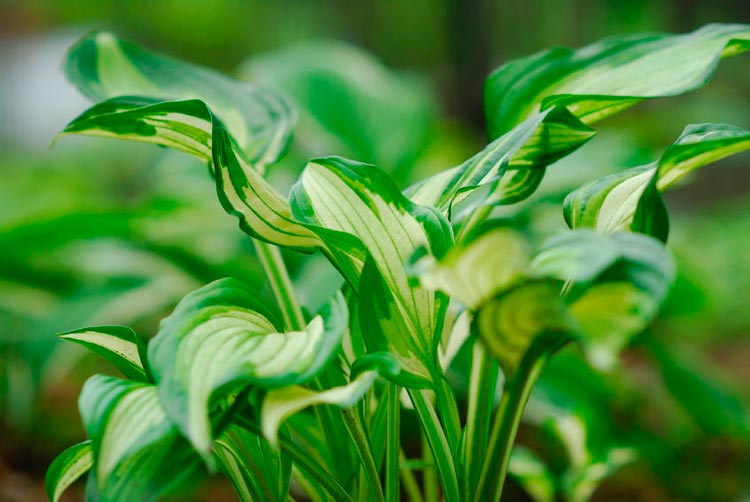Hosta
Hostas are a mainstay in shade gardens, valued for their lush foliage and low-maintenance nature.
- Habit: Hostas are perennial plants that grow from rhizomes. They primarily form clump-like structures of leaves that range from small to quite large, depending on the variety. Their leaves can be solid in color or variegated and come in shades of green, blue-green, yellow, and white. While most hostas are low-growing, some varieties can reach heights of up to 3 feet (90 cm) when in bloom.
- Hardiness: Generally hardy in USDA Zones 3-9, hostas are quite tolerant of a variety of soil conditions, though they prefer well-drained, humus-rich soil. They’re highly adaptable and can tolerate anything from full shade to partial sun, although darker-leaved varieties are usually more tolerant of sun. Once established, hostas are relatively drought-tolerant but appreciate consistent moisture for optimal growth.
- Flowers and Bloom Time: While primarily grown for their foliage, hostas also produce flower spikes that rise above the leaves, usually in late spring to mid-summer. Flowers can be white, lavender, or purple, and some varieties are quite fragrant. The blooms attract pollinators like hummingbirds and bees.
- Uses: Hostas are versatile plants commonly used for filling in shady spots where many other plants struggle to grow. They make excellent ground covers and are frequently used for border plantings, as well as in containers. Their leaves provide excellent contrast and texture in floral arrangements. While not the first choice for cut flowers, the taller flower spikes can be used in arrangements as well.
- Benefits: Hostas offer a number of ecological benefits. They’re excellent for erosion control, especially on slopes and in areas where the soil is less than ideal. Additionally, their large leaves can act as a living mulch, conserving soil moisture and suppressing weeds. They’re also good companions for other shade-loving plants, as they don’t compete aggressively for nutrients.
With their wide variety of sizes, colors, and shapes, hostas provide endless opportunities for creativity and enjoyment in the garden.

